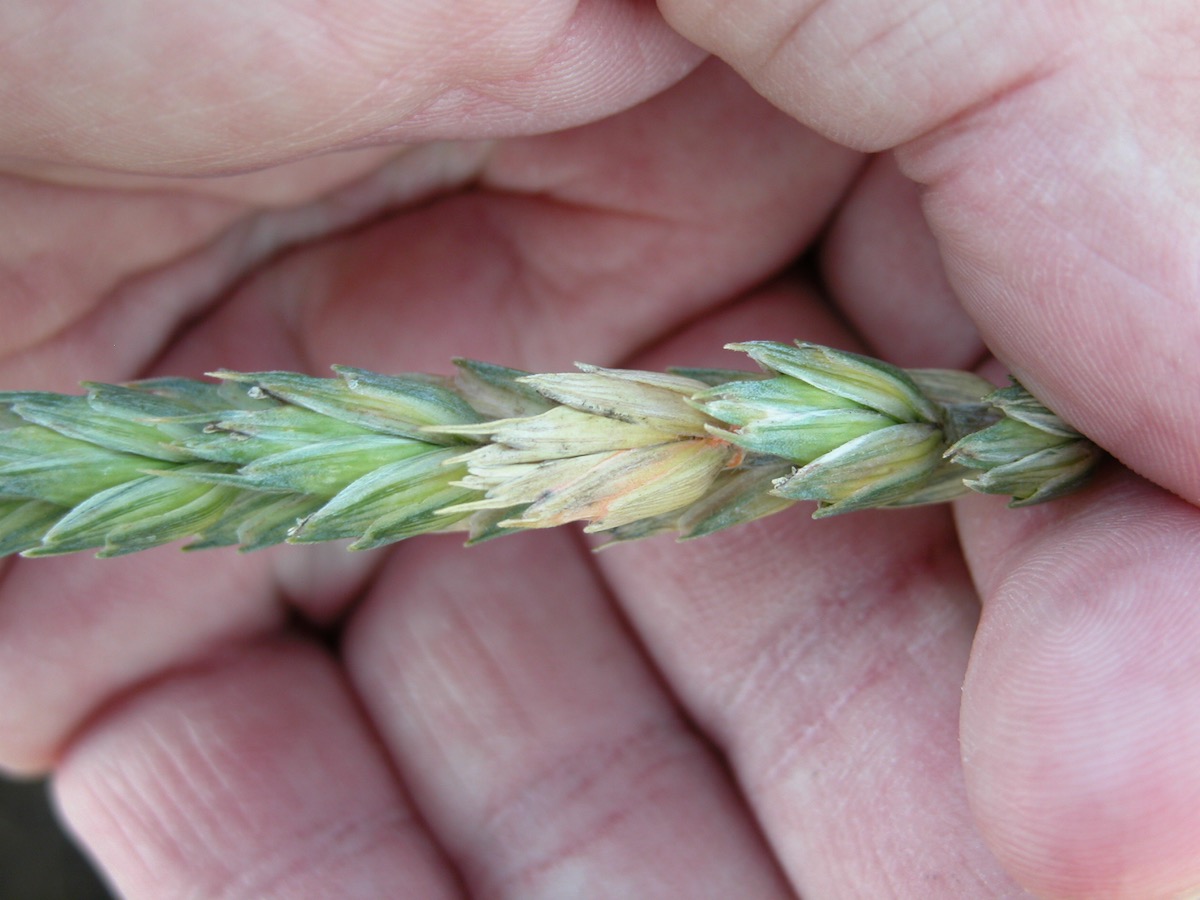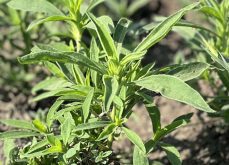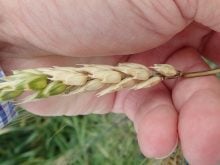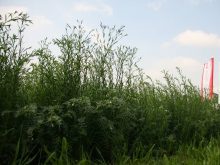Kelly Turkington, a longtime plant pathologist for Agriculture and Agri-Food Canada in Lethbridge, strongly supports the notion that an integrated approach to managing fusarium head blight (FHB) offers the best chance of success for cereal producers.
Even so, Turkington says, in much of Manitoba and northeastern Saskatchewan, that strategy hasn’t always worked as well as hoped by farmers, and he believes there is room for improvement.
Fusarium graminearium is the main fusarium species responsible for FHB outbreaks in Western Canada.
Read Also

Claas brings 1000 Series SP forage harvesters to Canada
In mid-August, Claas unveiled its new line of Jaguar forage harvesters at an event in Visalia, California, deep in the heart of that state’s dairy region.
Turkington maintains that in the past 10 to 15 years an integrated approach using resistant varieties, fungicide applications and avoiding cereals on cereals “hasn’t been as effective as we would like” in fields where the F. graminearium pathogen is widespread and conditions are ripe for disease development.
He says this has meant yield and quality losses for producers and associated problems related to fusarium-damaged kernels (FDKs) and deoxynivalenol (DON) mycotoxin concentrations in infected grain.
“In years and in regions where the conditions are really conducive and there is a lot of infected residues, (farmers) still encounter significant downgrading and issues with DON,” says Turkington.

“The frustration with FHB is our tools are not fully effective yet,’ he says, adding advancing FDK and DON management in cereal crops may a require a change in mindset, regulations and/or chemistries.
Turkington spoke to Grainews about fusarium head blight control, following his presentation on the topic at the Manitoba Agronomists’ Conference held in Winnipeg in December.
Turkington says he’s optimistic new research into areas like variety development, timely fungicide application, seed health and enhanced agronomic practices will provide cereal producers a bigger and more effective toolbox to work with.
“The tools that we have [against FHB] do not necessarily work as well as we would like them to right now. But there is lots of research and other activity going into improving that, so I’m hopeful,” he adds.
In the meantime, Turkington maintains tweaking some of the existing tools for controlling fusarium can benefit farmers hoping to ward off the fungal disease in their cereal crops. Of those, he says a big one has to do with when producers head out to the field to spray FHB fungicides.
Turkington notes fungicides don’t provide the same level of protection against fusarium as they do for some other important diseases in cereals. He says another limiting factor is that unlike for common foliar diseases such as the leaf spot complex, it’s essential the fungicide timing decision for FHB be made before symptoms turn up.

For fusarium fungicidal treatments, which are typically effective for two to three weeks, the key target is always head tissue, while the target for leaf disease fungicides is the upper canopy of cereal crops. Turkington stresses farmers need to not only pinpoint these targets but also get their timing right if they want to maximize the effectiveness of their FHB and leaf disease sprays.
“If that head tissue is still in the boot, it is totally unprotected, and the fungicide will be deposited on the flag leaf sheath instead. You need to have head tissues physically out so that you can spray fungicide on them,” he says.
“You need to put the fungicide directly on the plant tissue you want to protect and do this before you actually see symptoms in the field, so that makes it a bit more challenging.”
Turkington notes the fungicide application window for wheat typically starts at around 75 per cent head emergence for wheat, and for barley, it is about 70 per cent head emergence.
“The problem is if you apply at that stage, you potentially have 25 per cent of the wheat heads or 30 per cent of the barley heads totally unprotected by fungicide,” he says.

Turkington says studies performed in the U.S over the past 15 years or so, as well as more recent work by University of Saskatchewan plant pathologists Randy Kutcher and Gursahib Singh and other researchers in Canada, have shown when FHB fungicides are applied too early, it can compromise the level of FDK and DON control in cereal crops.
“The research is pretty clear that you want to avoid that early part of that window, because you’re simply not hitting all of those heads,” he says. “Thus, the recommendation is to wait till the mid- to latter part of the window, and especially once you have full head emergence in the crop.”
According to Turkington, this helps ensure there is adequate fungicide coverage for a longer length of time during that critical grain filling period in cereals when head and leaf tissues require the most protection.
“Our most recent research under the [Canadian Agricultural Partnership] wheat and barley clusters, and that of other Canadian and U.S. colleagues, indicates you’re not going to pay a penalty in terms of efficacy and suppression of FDK and DON by going to the middle to latter part of that spray window. In fact, in many cases, you may get better control.”
Turkington says knowing the start of the fungicide label window isn’t optimal for fusarium protection can help inform spray decisions — though farmers, he adds, also must be mindful of maximum residue levels, pre-harvest intervals and the economics of fungicide use.
Turkington says it’s important to make sure sprayers are working properly and are properly calibrated, so fungicides are distributed as evenly and accurately as possible. He also advises farmers spraying for fusarium head blight try to use the right application technology to ensure fungicides adequately protect the target of concern — that is, the cereal heads.
According to Turkington, nozzles and nozzle combinations that maximize spray coverage on all sides of the vertical wheat heads can be more effective. He says the work of Canadian spray expert Tom Wolf and others clearly shows how angled nozzle setups are best for this kind of coverage.
As Turkington points out, there are plenty of useful spraying tips available at Wolf’s website (sprayers101.com). It includes an article on the effectiveness of angled spray nozzles for FHB control.
















